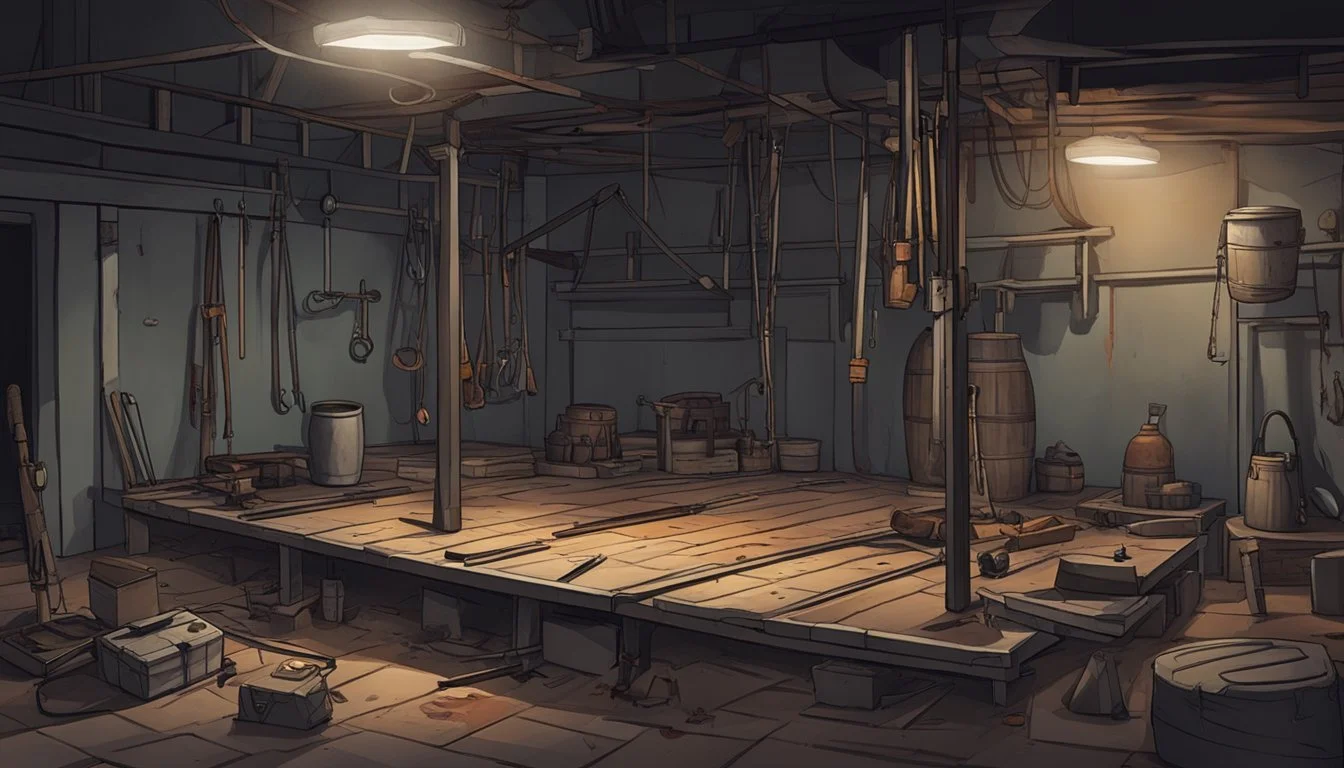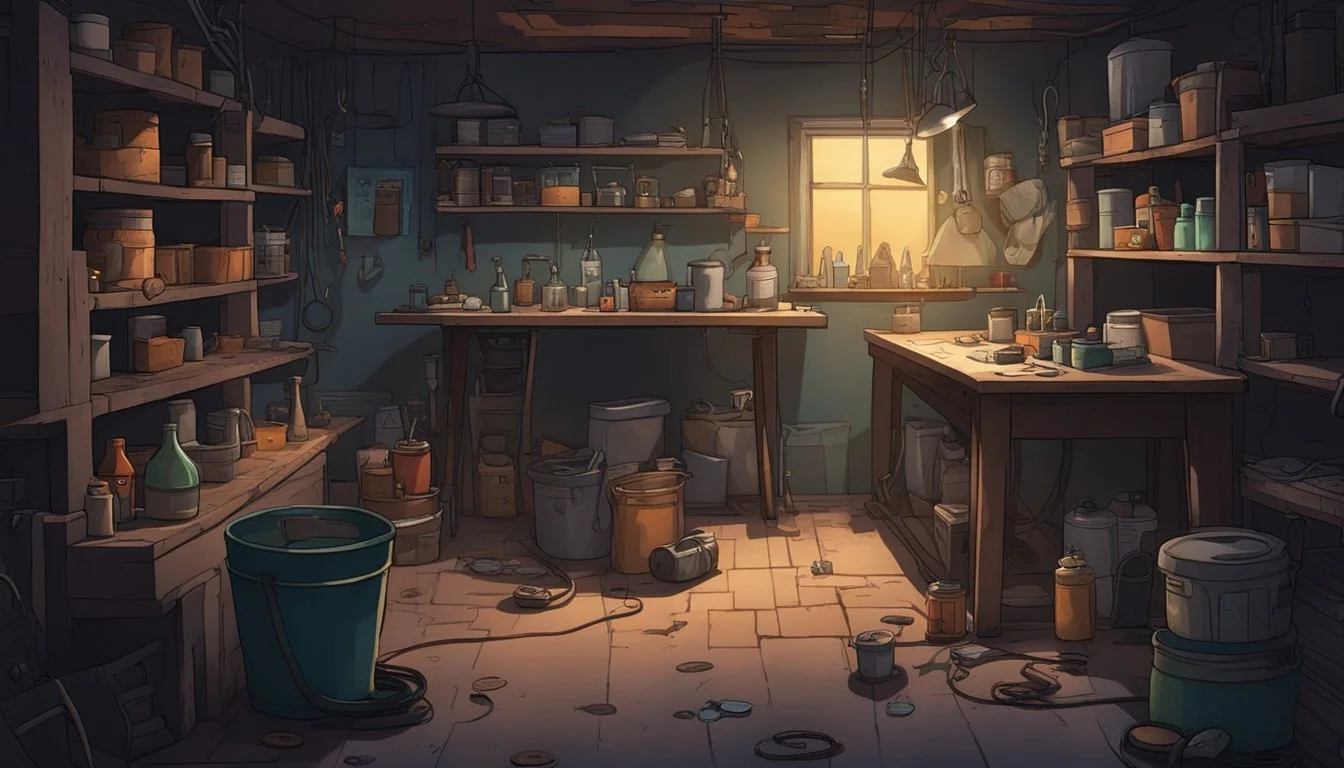Kansas City Butcher: Robert Berdella's House of Horrors
A Chilling Tale of Midwest Serial Killings
In the quiet neighborhood of Hyde Park, Kansas City, a seemingly ordinary house concealed unspeakable horrors. Robert Berdella, known as the "Kansas City Butcher," committed heinous acts of kidnapping, torture, and murder behind its unassuming facade. Between 1984 and 1987, Berdella claimed the lives of at least six young men, subjecting them to prolonged periods of captivity and brutal treatment.
Berdella's reign of terror came to an abrupt end on April 2, 1988, when one of his victims escaped. A man wearing only a dog collar leapt from a second-story window of Berdella's house, seeking help from a nearby neighbor. This desperate act led to the discovery of Berdella's crimes and the exposure of his house of horrors.
The case of Robert Berdella shocked the community and revealed the dark depths of human depravity. His actions earned him a place among America's most notorious serial killers, leaving an indelible mark on Kansas City's history. The house on Charlotte Street, once a silent witness to unspeakable acts, was later demolished, erasing the physical reminder of Berdella's crimes.
Early Life of Robert Berdella
Robert Andrew Berdella Jr. was born on January 31, 1949, in Cuyahoga Falls, Ohio. His early years were marked by significant events that shaped his later life and criminal behavior.
Childhood in Ohio
Berdella spent his first 18 years in Cuyahoga Falls, a small city in northeastern Ohio. He grew up in a middle-class family with his parents and younger brother. As a child, Berdella faced challenges at school due to his poor eyesight and weight issues.
He was often bullied by his peers, which led to feelings of isolation and resentment. During his teenage years, Berdella worked at a local restaurant. It was here that he allegedly experienced a traumatic event - he claimed to have been raped by a male coworker.
This incident reportedly had a profound impact on his psychological development. Berdella also became fascinated with the 1965 film "The Collector," which he later cited as an influence on his criminal activities.
College Years at Kansas City Art Institute
In 1967, Berdella left Ohio to attend the Kansas City Art Institute in Missouri. This move marked a significant transition in his life. At the institute, he studied to become a chef and showed promise in his culinary skills.
However, Berdella's time at the art institute was not without controversy. He was known for his eccentric behavior and gained a reputation for hosting unusual parties. These gatherings often featured drugs and attracted a diverse crowd of students and locals.
During his college years, Berdella also began to explore his sexuality more openly. He became involved in Kansas City's gay community, which would later play a role in his victim selection. Despite his academic potential, Berdella was expelled from the institute in 1969 for unknown reasons.
The Path to Brutality
Robert Berdella's descent into violence followed a disturbing progression, marked by early criminal behavior and an escalating pattern of brutality. His actions grew increasingly sadistic over time, fueled by dark obsessions and a desire for control.
Initial Criminal Behavior
Berdella's criminal tendencies emerged in his youth. As a teenager, he engaged in petty theft and vandalism. He also experimented with drugs, particularly marijuana and LSD. These substances may have contributed to his erratic behavior and warped thinking.
In his early twenties, Berdella became fascinated with the occult. He dabbled in witchcraft and collected books on black magic. This interest in the macabre foreshadowed his later acts of extreme cruelty.
Berdella's first known violent crime occurred in 1984. He drugged and assaulted a young man, but the victim managed to escape. This incident marked a turning point, as Berdella realized he could act on his violent urges.
Development of Violent Behavior
Berdella's crimes escalated rapidly after his first assault. He began targeting vulnerable young men, often runaways or sex workers. His method became more refined and brutal with each victim.
He developed a pattern of abduction, torture, and murder. Berdella would drug his victims, then subject them to days or weeks of horrific abuse. He meticulously documented his crimes, keeping detailed logs and photographs.
Berdella's sadism intensified over time. He performed crude medical experiments on his captives, including injecting drain cleaner into their throats. His actions demonstrated an increasing detachment from human empathy and a growing appetite for inflicting pain.
By 1988, Berdella had killed at least six men. His house on Charlotte Street in Kansas City had become a true chamber of horrors, filled with evidence of his unspeakable crimes.
Captivity and Torture
Robert Berdella subjected his victims to unimaginable horrors during their captivity. His methods were brutal and systematic, focused on prolonging suffering through various forms of physical and psychological torture.
Abduction of Young Men
Berdella targeted young men, often male prostitutes or runaways. He lured victims to his home with offers of drugs, money, or shelter. Once inside, Berdella would incapacitate them, typically using chloroform or sedatives mixed into drinks. He then restrained the men, beginning a nightmarish ordeal of captivity and abuse.
Berdella kept meticulous logs detailing his crimes. These records revealed he held some victims for up to 6 weeks before killing them. During this time, he treated the men as sex slaves, subjecting them to repeated rapes and torture sessions.
Berdella's Torture Methods
Berdella employed an array of sadistic techniques to torment his captives:
Electric shocks to genitals and other sensitive areas
Injections of drain cleaner and other caustic substances
Beatings with various implements
Asphyxiation and near-drowning
Gouging of eyes with needles
Insertion of foreign objects into body cavities
He photographed the torture, creating a disturbing visual record of his crimes. Berdella claimed his goal was to create compliant sex slaves through a process of "behavior modification."
Surviving Victim's Escape
In March 1988, Berdella's final victim managed a daring escape. After days of torture, 22-year-old Chris Bryson leapt from a second-story window of Berdella's house. Naked except for a dog collar, Bryson fled to a neighbor for help.
Bryson's escape led to Berdella's arrest and the discovery of his crimes. Police found torture devices, photos, and Berdella's detailed logs. The survivor's testimony was crucial in bringing the Kansas City Butcher to justice and ending his reign of terror.
The Victims of the Kansas City Butcher
Robert Berdella's reign of terror in Kansas City claimed the lives of at least six young men between 1984 and 1987. His victims endured unimaginable torture and suffering before their tragic deaths.
Profiles of the Murdered Men
Jerry Howell, 19, was Berdella's first known victim in July 1984. Robert Sheldon, 23, disappeared in April 1985. Mark Wallace, 20, vanished in June 1985. Todd Stoops, 21, went missing in August 1986. Larry Pearson, 20, disappeared in June 1987. James Ferris, 25, was Berdella's final known victim in September 1987.
These young men shared some common traits. Most were in their early 20s and struggled with drug addiction or homelessness. Berdella often lured them with promises of drugs, money, or shelter.
Documented Killings and Confessions
Berdella kept meticulous records of his crimes in a notebook. He photographed the torture sessions and wrote detailed logs of the drugs and methods he used. In his confession, Berdella admitted to injecting the victims with tranquilizers and applying electric shocks.
He subjected the men to horrific acts of sexual violence and sadism. Some victims were held captive for days or weeks before their deaths. Berdella claimed he was conducting "experiments" on pain tolerance.
Tragic Endings
The victims suffered immensely in their final days. Berdella's records showed he withheld food and water, administered caustic substances, and inflicted severe injuries. Most died from asphyxiation or blood loss.
After death, Berdella dismembered the bodies and disposed of the remains in trash bags. He kept some body parts and personal effects as trophies. The full extent of his crimes may never be known, as some victims likely remain unidentified.
Investigation and Evidence
The investigation into Robert Berdella's crimes uncovered a wealth of disturbing evidence. Law enforcement pieced together the horrific details through victim testimony, physical evidence, and Berdella's own meticulous records.
First Signs of Suspicion
Neighbors had long harbored concerns about Berdella's behavior. Strange noises and foul odors emanating from his house raised eyebrows. Some reported seeing young men enter the property but never leave.
Local authorities received scattered reports but lacked concrete evidence to act. Berdella's reputation as an eccentric antiques dealer provided cover for his heinous activities.
Break in the Case
The investigation gained momentum in April 1988. A severely injured man escaped Berdella's house, wearing only a dog collar. He alerted police to the horrors inside.
Officers quickly obtained a search warrant. Upon entering Berdella's residence, they discovered a grisly scene. Torture devices, restraints, and human remains littered the premises.
Recovering Physical Evidence
Investigators meticulously combed through Berdella's home. They uncovered hundreds of Polaroid photos documenting his victims' suffering. A human skull was found buried in the backyard.
Berdella's detailed journals provided a chilling account of his crimes. These writings included information on torture methods, drug dosages, and disposal techniques.
Forensic teams collected DNA evidence from various items in the house. This physical evidence corroborated victim statements and helped build a strong case against Berdella.
Legal Proceedings
Robert Berdella's heinous crimes were exposed in 1988, leading to a series of legal actions that would permanently remove him from society. His arrest, trial, and sentencing unfolded rapidly as authorities pieced together the evidence of his gruesome acts.
The Arrest and Charges
On April 2, 1988, police arrested Robert Berdella after one of his victims escaped and alerted authorities. Investigators searched Berdella's house at 4315 Charlotte Street, uncovering a trove of damning evidence.
They found photographs, journals, and human remains that painted a horrific picture of torture and murder. Berdella was initially charged with multiple counts of sodomy and assault.
As the investigation progressed, prosecutors added six counts of first-degree murder to Berdella's charges. The evidence was overwhelming, leaving little doubt about his guilt.
Trial and Conviction
Berdella's trial began in December 1988. Facing insurmountable evidence, he opted to plead guilty to avoid the death penalty.
The court proceedings were brief but shocking. Prosecutors presented Berdella's detailed logs, which chronicled his victims' suffering. These records provided a chilling account of his crimes.
On December 19, 1988, Robert Berdella was convicted on all charges. His guilty plea spared the victims' families from a lengthy trial but ensured he would never walk free again.
Life Sentence
The judge sentenced Berdella to life in prison without the possibility of parole. He was transferred to the Missouri State Penitentiary to serve his sentence.
Berdella's life behind bars was relatively short. He suffered from high blood pressure and other health issues. On October 8, 1992, just four years into his sentence, Berdella died of a heart attack.
His death at age 43 marked the final chapter in the case of the Kansas City Butcher. The house on Charlotte Street was later demolished, erasing the physical reminder of Berdella's crimes.
Berdella's Life and Trading in Westport
Robert Berdella operated a small business in Kansas City's Westport neighborhood. He became known locally for his antique shop and involvement in community events.
Bob's Bazaar Bizarre
Berdella opened Bob's Bazaar Bizarre in 1982. The shop sold oddities, antiques, and occult items. Located in Westport's vibrant commercial district, it attracted curious locals and tourists alike.
The store's inventory ranged from vintage clothing to skulls and shrunken heads. Berdella sourced many items from estate sales and flea markets. His eccentric taste and knowledge of collectibles helped build a steady customer base.
Bob's Bazaar Bizarre became a fixture in Westport's quirky shopping scene. The shop's unusual wares and Berdella's charismatic personality made it stand out among other local businesses.
Interactions with Kansas City Community
Berdella actively participated in Westport's social life. He joined the Westport Merchants Association and helped organize neighborhood events. His involvement earned him respect from local business owners.
He regularly set up booths at the Westport Flea Market, selling items from his shop. Berdella's friendly demeanor and willingness to haggle made him popular among market-goers.
Outside of business, Berdella lived in nearby Hyde Park. He maintained a well-kept home and often hosted gatherings for friends and acquaintances. His apparent normalcy and community engagement helped mask his sinister private life.
Influence on Pop Culture and Media
Robert Berdella's gruesome crimes have left an indelible mark on popular culture and media. His case has inspired various works of fiction and non-fiction, sparking public fascination with serial killers.
Books and Films
Several books have been written about Robert Berdella's crimes. "Rites of Burial" by Tom Jackman and Troy Cole provides a detailed account of the investigation. The documentary "The Kansas City Butcher" explores Berdella's life and crimes through interviews and archival footage. A horror film titled "Berdella" loosely based on his murders was released in 2009, though it received mixed reviews.
Public Fascination with Serial Killers
The Berdella case contributed to the growing public interest in serial killers during the late 20th century. True crime enthusiasts have discussed his crimes extensively on online forums and podcasts. His story has been featured in numerous television documentaries and crime shows, including episodes of "Serial Killer Profile" and "Born to Kill?"
This public fascination has led to debates about the ethics of true crime entertainment and its potential impact on victims' families. Some argue that such media glorifies killers, while others claim it serves educational purposes.
Aftermath and Legacy
Robert Berdella's horrific crimes left a lasting impact on Kansas City and beyond. His actions reshaped community dynamics and forced a reckoning with the dark realities of violence and sadism.
Impact on the Victims' Families
The families of Berdella's victims endured immense grief and trauma. Many struggled with anger, depression, and post-traumatic stress. Some relatives formed support groups to cope with their shared anguish. These groups later expanded to assist other families affected by violent crime.
Several families filed lawsuits against local authorities, claiming police negligence in investigating missing person reports. These legal actions led to policy changes in how missing persons cases are handled.
Changes in Community Awareness
Berdella's crimes shattered Kansas City's sense of security. Neighborhood watch programs surged in popularity. Residents became more vigilant about reporting suspicious activity.
Local schools implemented new safety education programs. These initiatives taught children about personal safety and recognizing potential dangers.
The case also sparked discussions about sexual violence and LGBTQ+ vulnerabilities. Community organizations developed outreach programs to support at-risk youth.
Berdella died of a heart attack in prison in 1992. His death brought little closure to a community still grappling with the aftermath of his sadistic acts.







